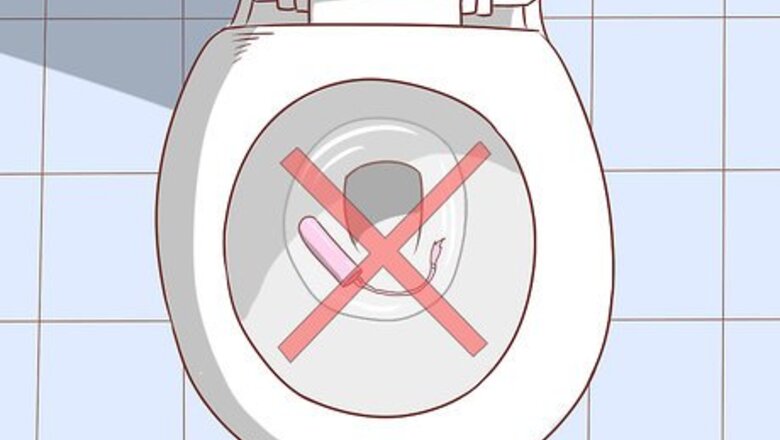
views
Disposing of the Tampon at Home
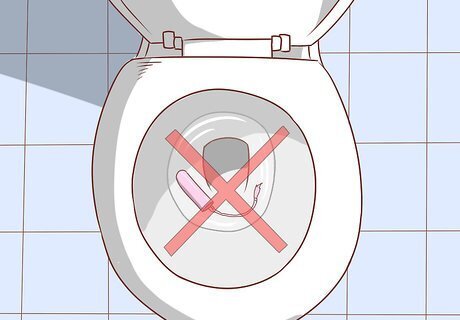
Never flush tampons down the toilet. Once you have removed your tampon, you should dispose of it properly. This means never letting the tampon simply fall into the toilet and then flushing the tampon down the drain. This will clog the drain of the toilet and could damage the plumbing.
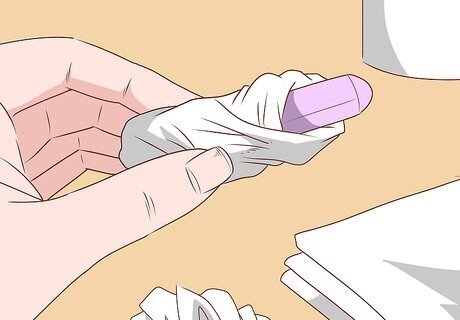
Wrap the tampon in a piece of toilet paper. You should take a piece of toilet paper and wrap it around the tampon. This will prevent blood from dripping everywhere and protect your hands from touching the blood on the tampon. Wrapping the tampon in toilet paper will also make it appear more discreet and hidden. You may do this to try to cover up the tampon.

Place it in the garbage. Make sure you dispose of the tampon in the garbage. Throwing it away as soon as you take it out will contain the mess and allow you to get rid of the tampon discreetly. Sometimes tampons can start to smell if they are left out for a few days so you may start a separate garbage for your tampons next to the garbage or in the bathroom cupboard. Make sure you dispose of it after one to two days.
Discarding the Tampon When You’re Away from Home
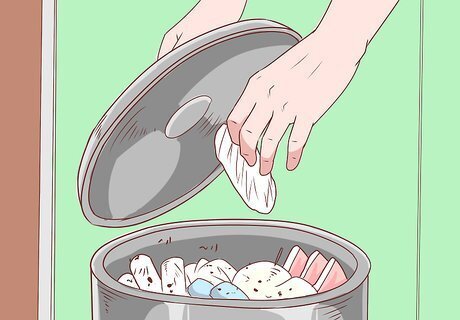
Cover the tampon in toilet paper. Maybe you need to dispose of your tampon in a public washroom or when you are at a friend’s house for a sleepover or a hang out. You should always start by wrapping the tampon in toilet paper. This will protect your hands from getting blood on them and prevent any blood from the tampon from getting on the floor, the toilet, or all over the garbage. You may decide to wrap the tampon several times in toilet paper to protect it, especially if you are at a friend’s house and want to dispose of it discreetly.
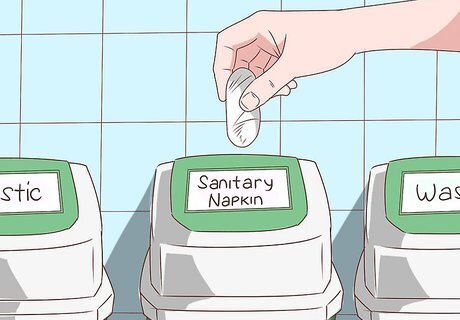
Use the disposal bin in a public washroom. If you are removing the tampon in a public washroom, there is often a small metal bin beside the toilet that you can open and place the tampon in. It may be marked “tampons only” or “sanitary napkins only.” You should close the lid of the metal bin once you have deposited the tampon. Often these disposal bins are emptied by cleaning staff once a day.
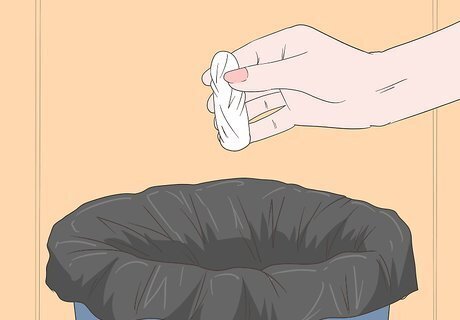
Put the tampon in the garbage at a friend’s house. If you are at a friend’s house for a sleepover or a hang out and have to dispose of your tampon, you should place it in their garbage. Never flush it down the toilet, as this can clog the toilet. You should avoid putting the tampon in your bag or in your pocket, even if it is wrapped in toilet paper. Tampons can have a strong smell due to the blood and menstrual material on it so you do not want to find a smelly tampon in your bag or in your pocket later.
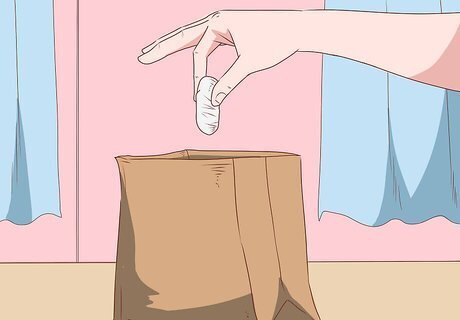
Place the tampon in a paper bag if there is no washroom. If you are camping or you do not have access to a proper washroom for whatever reason, you should try to wrap the tampon in toilet paper, a paper towel or a piece of paper, in a pinch. Then, you should place the tampon in a paper or plastic bag. This will ensure the tampon does not leak blood or get blood everywhere. You should then try to throw the bag away as soon as you can in a proper garbage.
Removing the Tampon Properly

Sit down on the toilet. It is easier to remove the tampon when you are seated on the toilet. Being seated will allow you to spread your legs apart and access the tampon. It will also help you angle your fingers so you can easily slide out the tampon. Sitting on the toilet will also ensure that any blood that drips out when you remove the tampon will go into the toilet. This will make for less mess, with no blood on your underwear or on the floor.
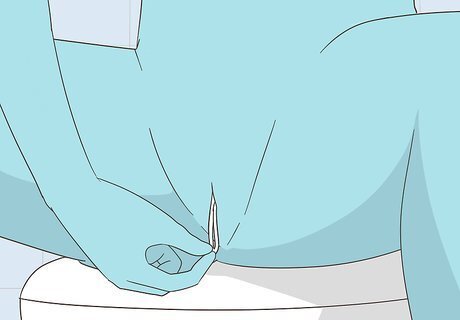
Find the string attached to the tampon. Your tampon should have a white string that dangles off the end of the tampon. You should be able to look between your legs and find the string coming out of your vagina. If you do not see a string dangling out, it may have gotten stuck in your vagina throughout the day. Often, the string gets broken or tangled up when you exercise. You may need to use your fingers to probe around your vaginal opening for the string.

Gently pull the string and remove the tampon. Once you have located the string, you should grip it gently with two fingers. Then, carefully pull on the string to slide the tampon out of your vagina. It should slide out fairly easily with a gentle pull. If your tampon does not come out or appears to be stuck, you may need to seek medical attention. Sometimes tampons can get stuck if they are left in too long, if the string gets stuck in your vagina, or if you accidentally have sex while wearing a tampon. You should get the tampon removed as soon as possible by a doctor as leaving the tampon in can put you at a high risk of developing Toxic Shock Syndrome.
Using Tampons Safely
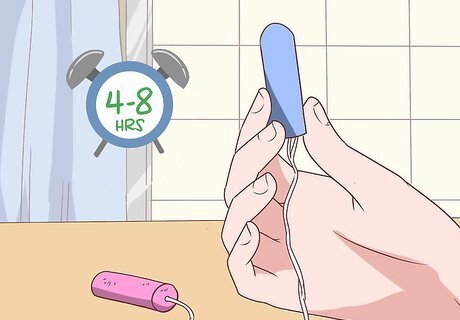
Always change your tampon every four hours. You should try to always change your tampon every four hours as leaving it in for longer than that hours can increase your risk of developing Toxic Shock Syndrome. You may end up using multiple tampons in a day, depending on your flow, but this is to be expected. If you tend to forget to take out your tampon, you may set a reminder in your phone for every four hours so you remember to change it. You should also only wear tampons to bed if you plan to wake up in four hours.
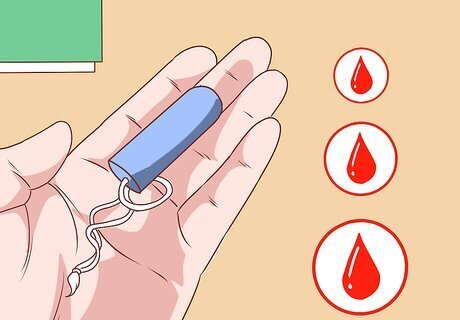
Use a tampon that matches your flow. You should look for tampons that have the absorbency level that you need based on your flow. This will ensure you have the necessary protection and are using a tampon that fits your needs. If you have a heavier flow, especially during the first two to three days of your period, you may go for a tampon with higher absorbency. If you have a lighter flow, especially during the last few days of your period, you may opt for a tampon with the lowest absorbency. You can also determine your required absorbency by noting how the tampon appears when you remove it. If it appears dry, you may be using a tampon with an absorbency that is too high. If it appears soaked and very wet, you may need to use a tampon with a higher absorbency. You should never use a tampon to soak up discharge that is coming out of your vagina. They are only made for use when you have your period.

See a doctor if you display any symptoms of Toxic Shock Syndrome. You should see a doctor right away if you develop any symptoms of Toxic Shock Syndrome (TSS) while wearing a tampon. TSS is a bacterial infection that is caused by a build up of bacteria in your vagina. You may experience one or two of the symptoms of TSS at one time, including: A sudden fever (102 degrees Fahrenheit or more) Vomiting Diarrhea A red rash on your body Dizziness or faintness when you stand up



















Comments
0 comment